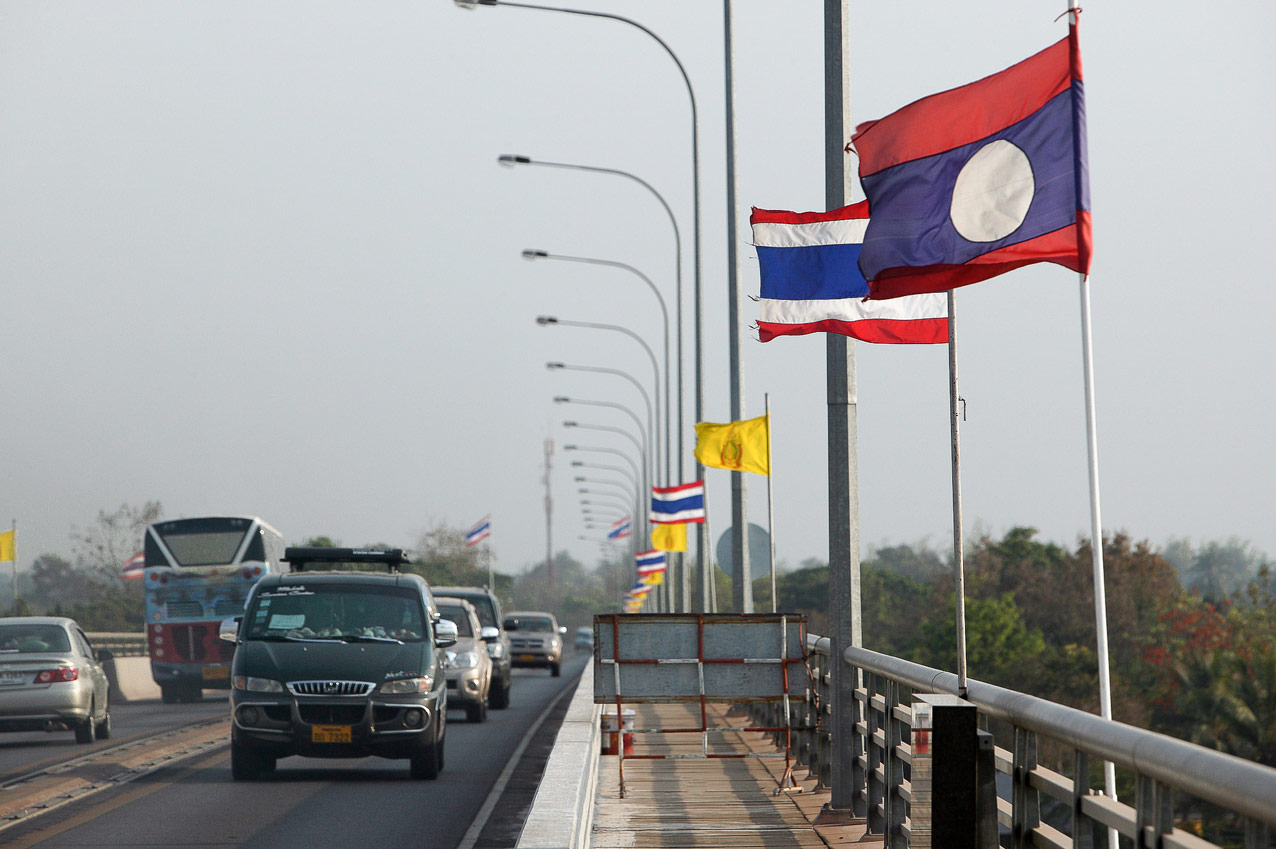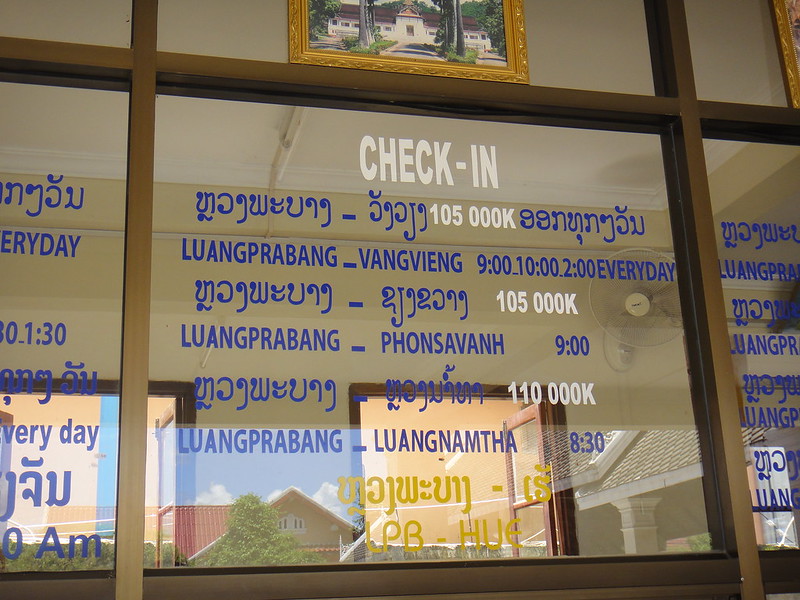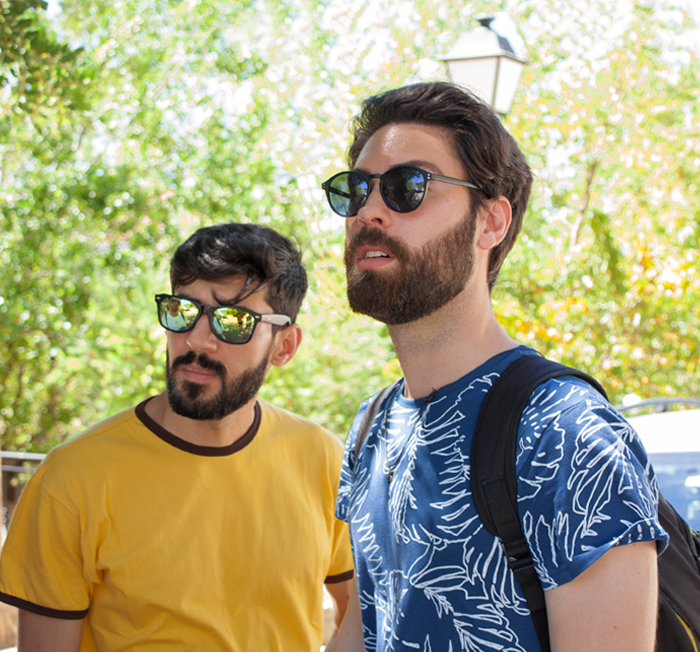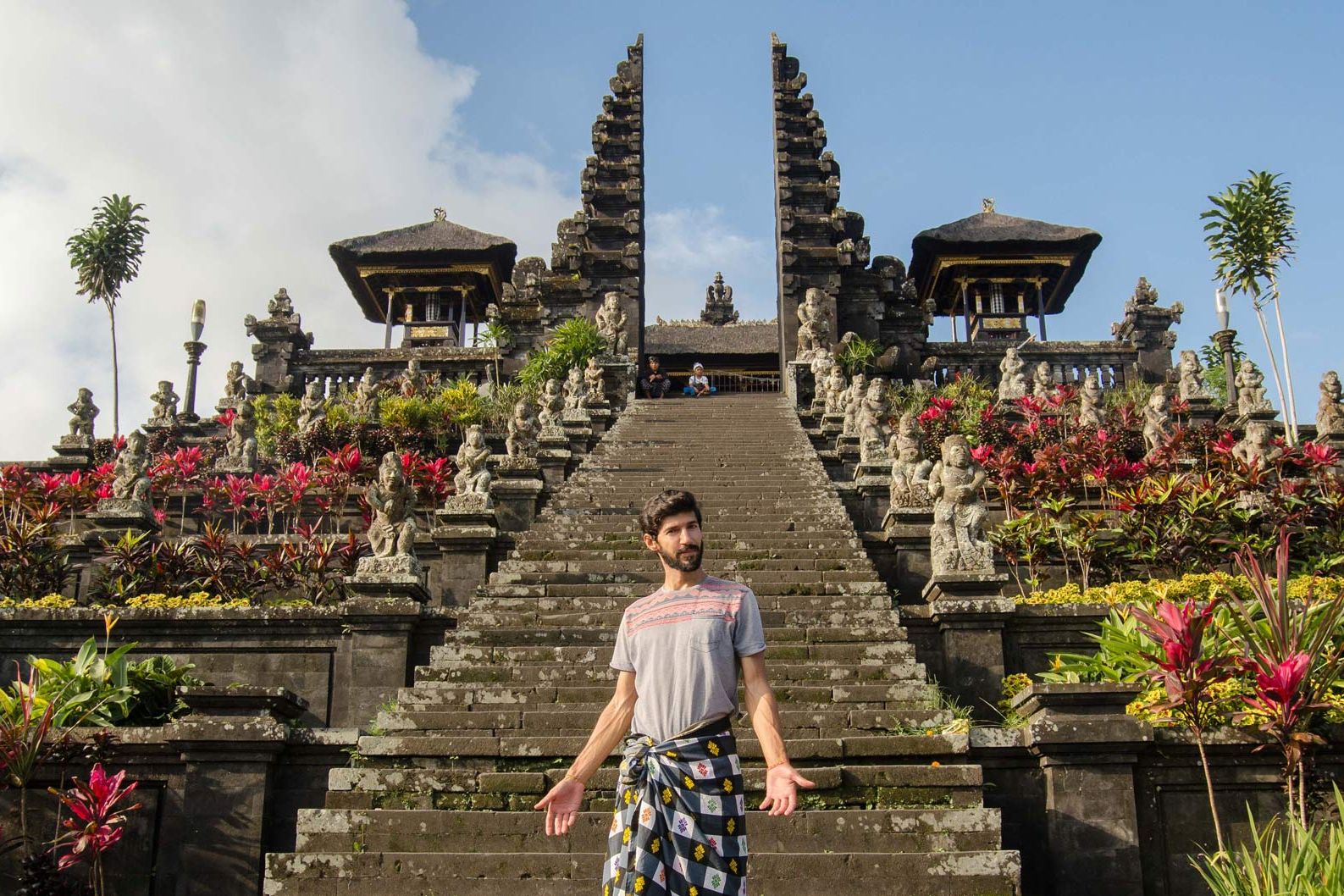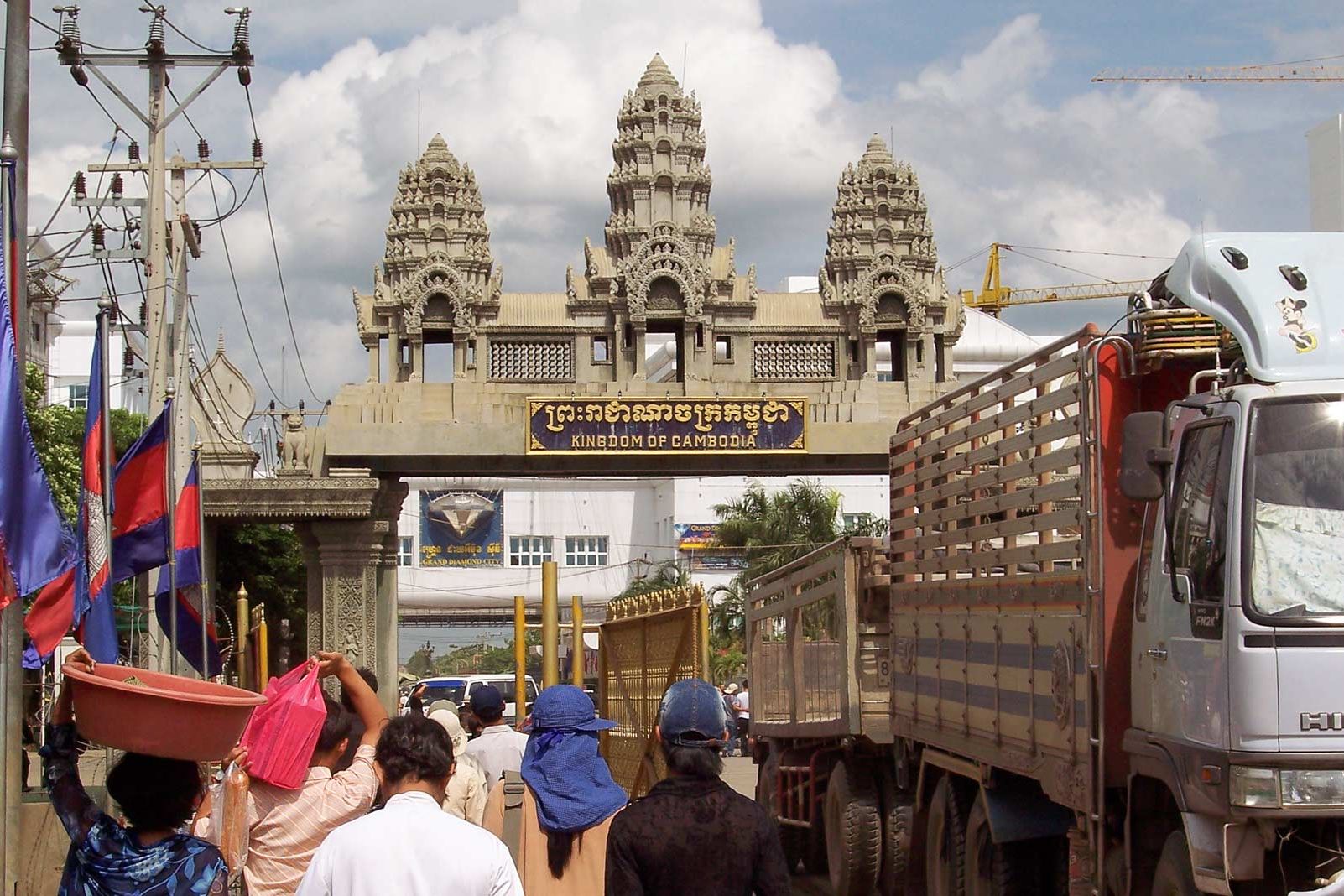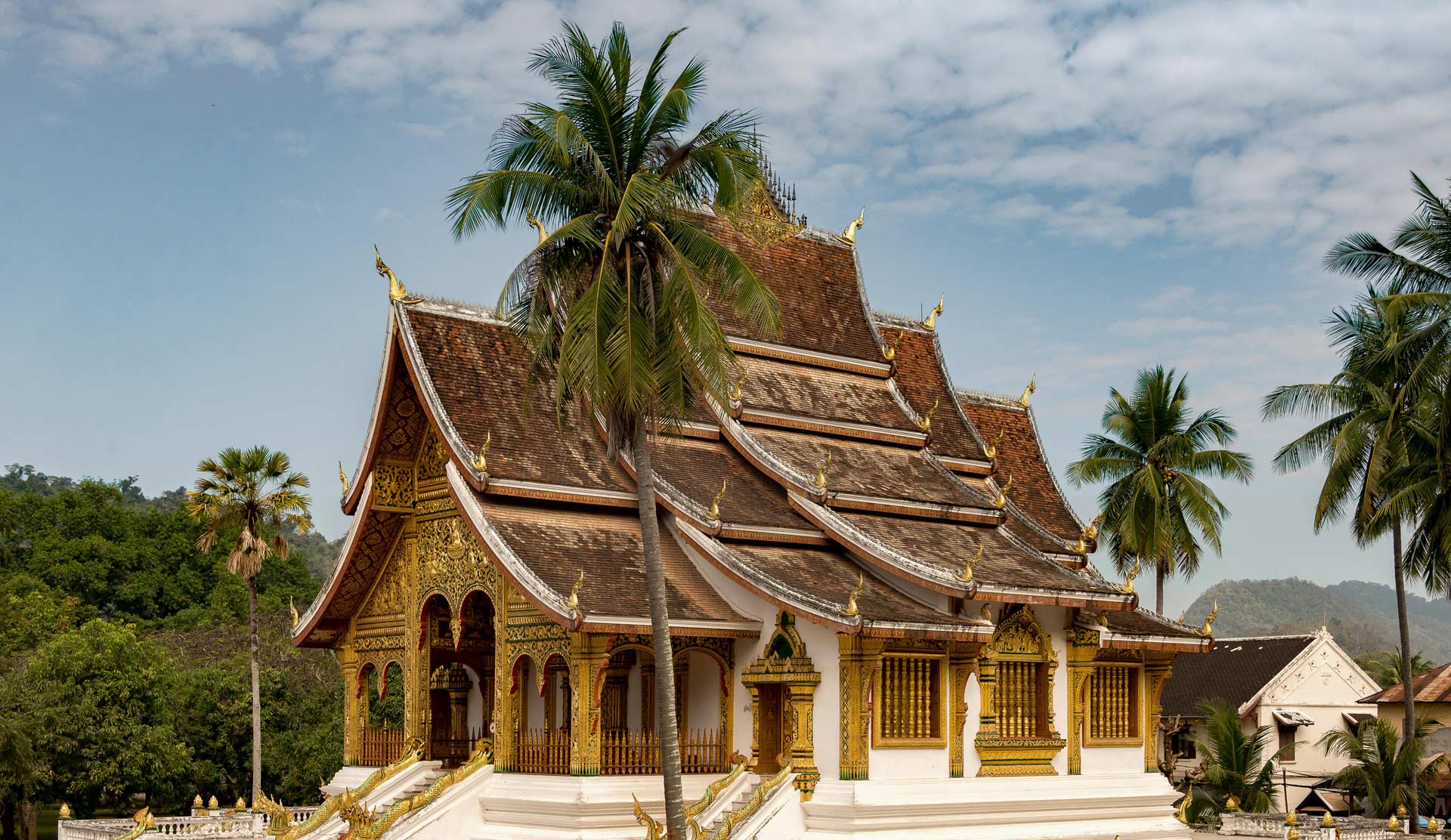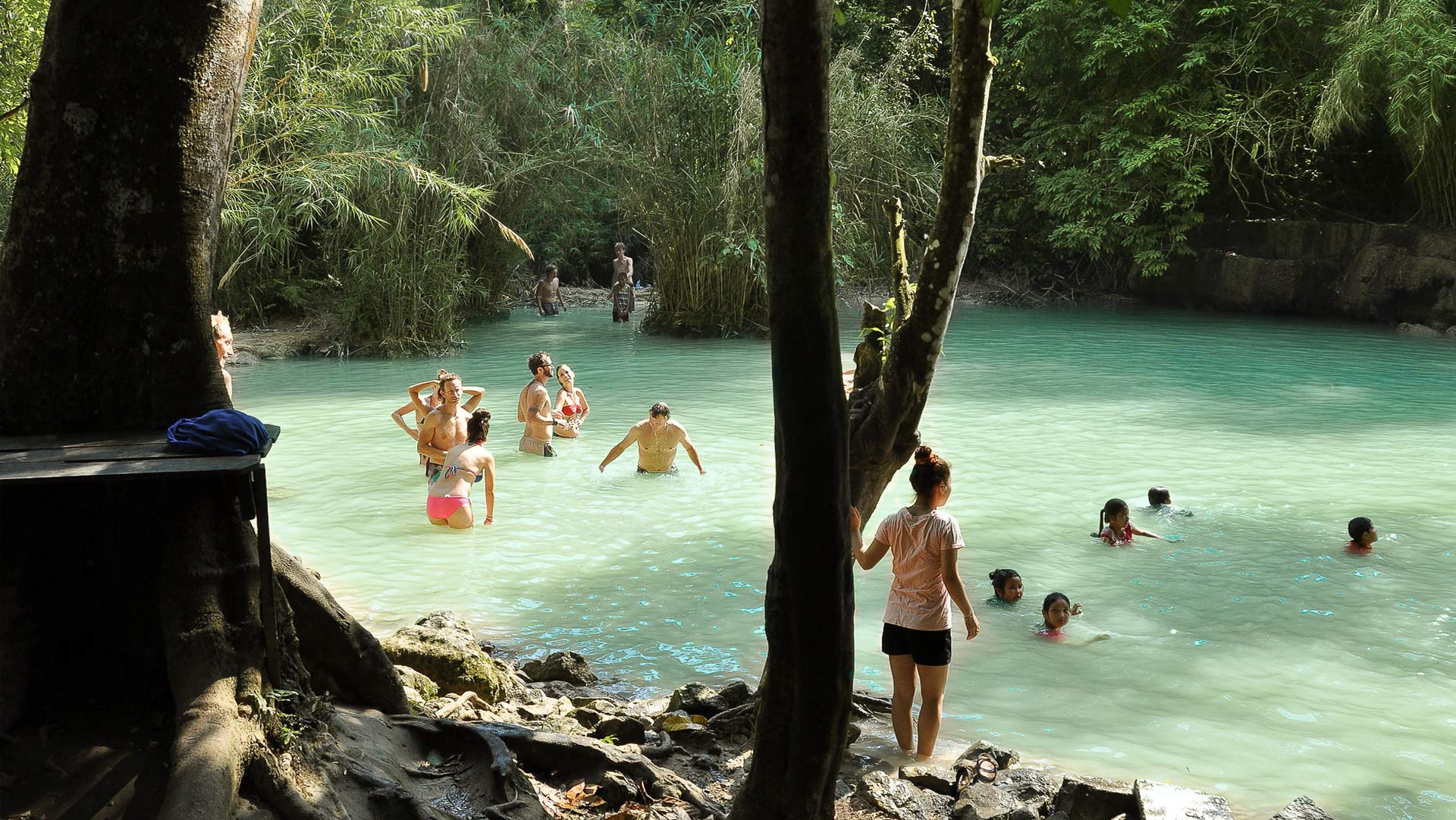Laos to Thailand by Bus (from Luang Prabang to Chiang Rai overland)
Traveling by bus may not be the fastest way to go from Laos to Thailand, but it sure is one of the cheapest. So if your goal is to save money by going overland, you came to the right place: we’ve compiled all the information you’ll need to do so.
Where to buy Bus tickets to Chiang Rai
In Luang Prabang vouchers for Bus tickets can be bought in advance at the travel agencies located on Sisavagnon street. Prices will vary slightly from agency to agency, so is up to you to look for the best offer.
Bus ticket price: around €32
Timetable: 6:00 PM on Tuesdays and Fridays
Departure: Luang Prabang Bus Station
Trip duration: 17 hours
However, if you prefer to buy your bus ticket online, we recommend www.bookaway.com (use the code “gravy5″ at checkout to get 5% off the ticket price).
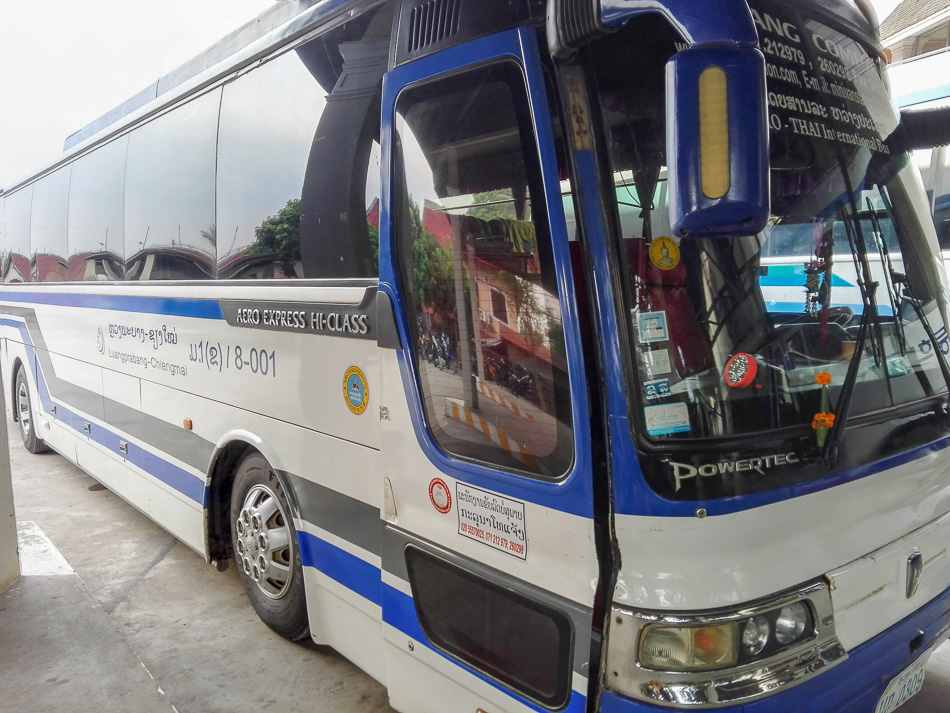
On the day of departure, you must be at the Luang Prabang Bus Station counter by 5:30 PM to check-in and exchange your voucher for the final bus ticket.
Tuk-tuks to the bus station cost around 15,000 Kip (€1.50) per person.
The Bus trip
Even though we bought tickets for a sleeping bus, we ended up on a bus with reclining seats — probably due to the small number of people traveling that day. Nonetheless, everyone got a blanket, and the spacious seats were comfortable enough to sleep in. It was a surprisingly tolerable 17-hour trip.
At the start of the trip, all passengers got a complimentary water bottle, a small soy milk box, and snacks.
We had 2 bathroom breaks during the night, and 1 more early in the morning. At the latest, we stopped at a service station with food stalls and a large clean washroom.
This first leg of the trip took around 14 hours (from Luang Prabang to the Huay Xai border post).
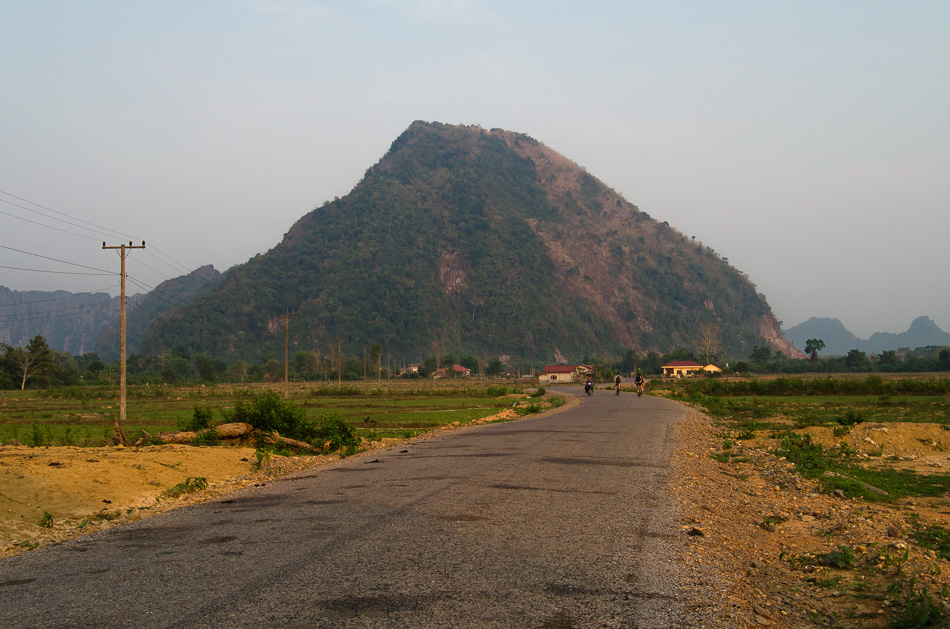
Crossing Huay Xai (Laos) – Chiang Khong (Thailand) border
Being Saturday morning, we had to pay a weekend fee of 10.000 Kips (€1.00) to get our passport exit stamp. The bus waited on the other side of the border.
From there, it takes 3 more hours to get to Chiang Rai.
Remember to check beforehand your entry requirements for Thailand: Visas and border crossings.
Arriving at Chiang Rai
We arrived at Chiang Rai Bus Terminal 2 at 11:00 A.M.
Here’s where all long-distance buses stop, and unfortunately, it’s also the furthest bus station from the city center.
From here you can hop on a songthaew and head to town. Share the fare with other people from your bus as many will be going to Chiang Rai too.
We ended up paying €0.50 each for a ride to the city center.
To keep saving money on transportation while visiting Chiang Rai, check the posts:
• Taking the public bus to the White temple
• Public bus to the bizarre Black House (Baan Dam) in Chiang Rai
Cover photo by Jim Holmes / AusAID
The first-timers guide to Luang Prabang, Laos
The small town of Luang Prabang situated in northern Laos was recommended to us by a traveler and friend from Aveiro, who described the place as ‘magical’.
On our first day after a night of torrential rain, we woke up with a mission to find a proper bakery to eat breakfast in. As an old French colony, Luang Prabang was set to have at least a good baguette somewhere.
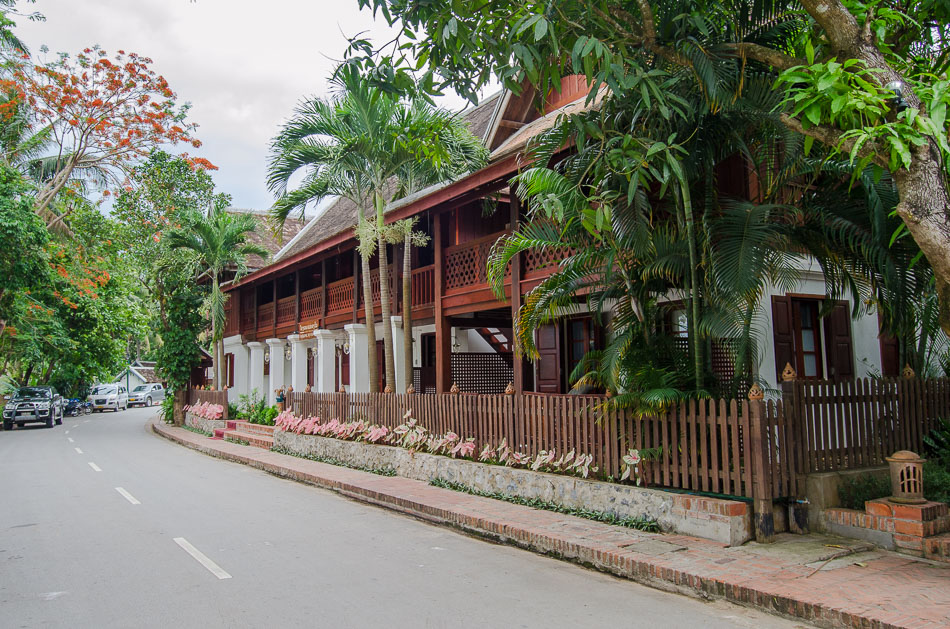
Much to our surprise, as we stomp along the red brick sidewalks, we noticed that there were no noisy motorbikes passing by and no other tourists in sight. All we could hear were birds chirping from the lush gardens and a handful of locals on bicycles going about their day. As our harried walk became a wandering stroll, we caught ourselves whispering to each other as if even the sound of our voices could disturb that morning tranquility.
After a month of being hyperstimulated in Vietnam, this slow pace of life felt like a cultural shock!
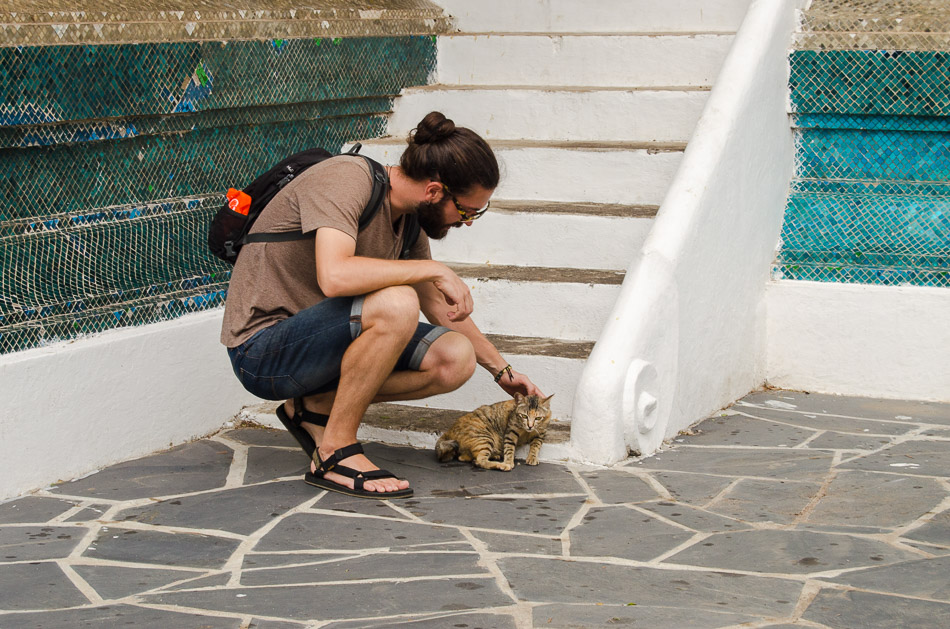
Luang Prabang weather
The dry season is from October to April and the wet season is from May to late September. The coldest months are December and January (17ºC).
The air is humid and hot with temperatures reaching 35ºC during the warmest months. Rain often falls during the night and early mornings resulting in sunny afternoons.
Check the weather forecast here: Accuweather/luang-prabang
Moving around town
Luang Prabang is fairly small so walking and cycling are the best options as they’re both silent, non-invasive, and cheap. Plus, almost every hotel has bicycles to rent.
What to do in Luang Prabang
Walking through the Old Quarter
Luang Prabang is a UNESCO World Heritage site, so if there’s a place you’d enjoy getting lost, this is it. There’s beauty anywhere you look: whether it’s the gold trims from a temple reflecting the sunlight, a well-tended little alley, or a group of friendly monks—it’ll be common to bump into monks.
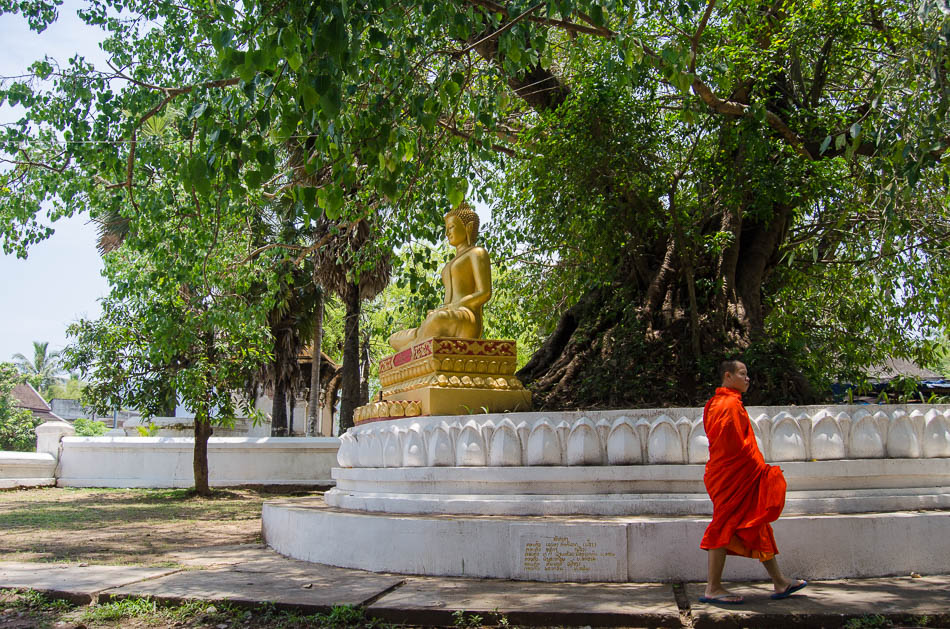
The Alms giving ceremony
Every morning as the sun rises, hundreds of monks from the 33 temples in Luang Prabang walk through the streets gathering food for their daily meal. Locals offer them rice, fresh fruit, and snacks while kneeling quietly roadside.
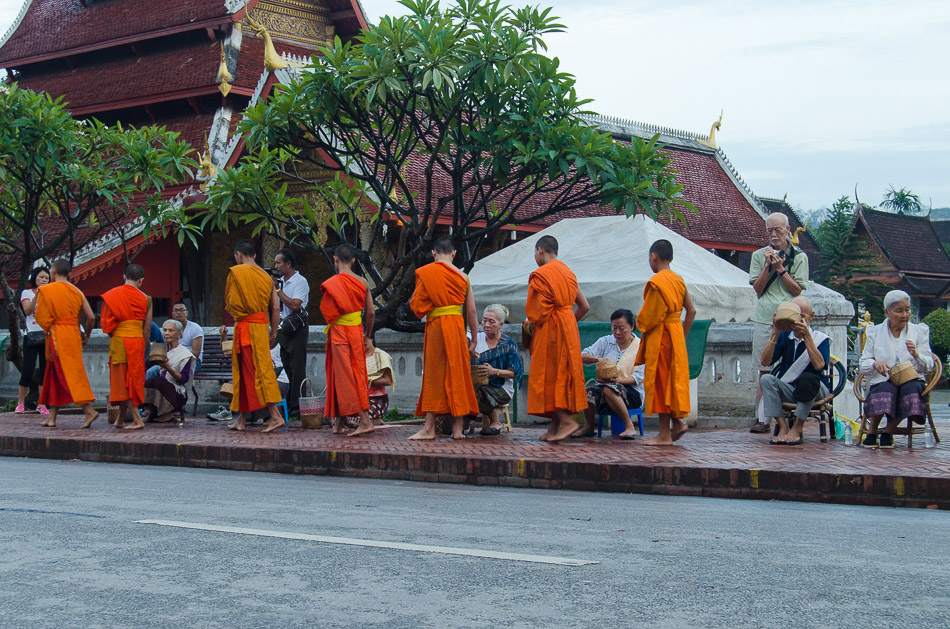
This ancient ceremony goes through various parts of the city, but a popular spot is the intersection of Soukkaseum and Sakkaline streets.
What not to do at the Alms Giving ceremony:
Be respectful and for the love of Buddha, do not disrupt the ceremony just because you want a cool Instagram photo!
Understand that the Alms giving is a Buddhist tradition dating back to the 14th century and a revered ritual for Laotians that tourism has started to corrupt. On account of becoming a famed tourist attraction, the procession is declining into a tourist trap.
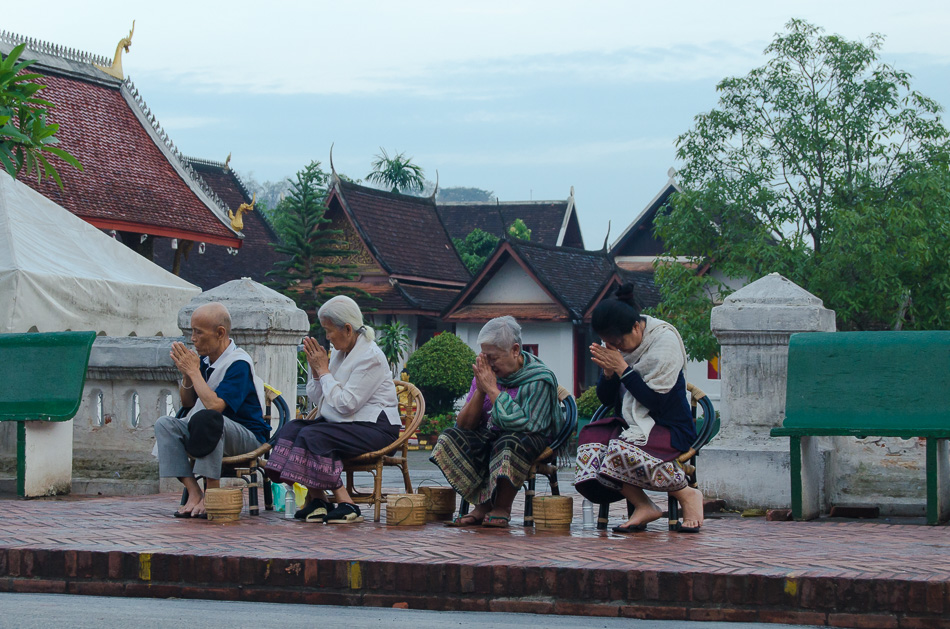
We believe that even having the chance to participate in it, travelers should avoid the tours and remain at a suitable distance. For more on the subject of responsible traveling read the post: Travel Etiquette—Good tourists vs Bad tourists.
Yoga Class in Utopia
The zen and peaceful atmosphere of the town will put sun salutations on your to-do list. Luckily, yoga and meditation classes are easy to find around Luang Prabang: Utopia has 1-hour yoga classes that take place on a little terrace overlooking the Nam Khan River.
Classes start at 7:30 AM from Monday to Friday, cost €4, and are suited for both yogis and first-timers.
For more information visit: www.luangprabangyoga.org
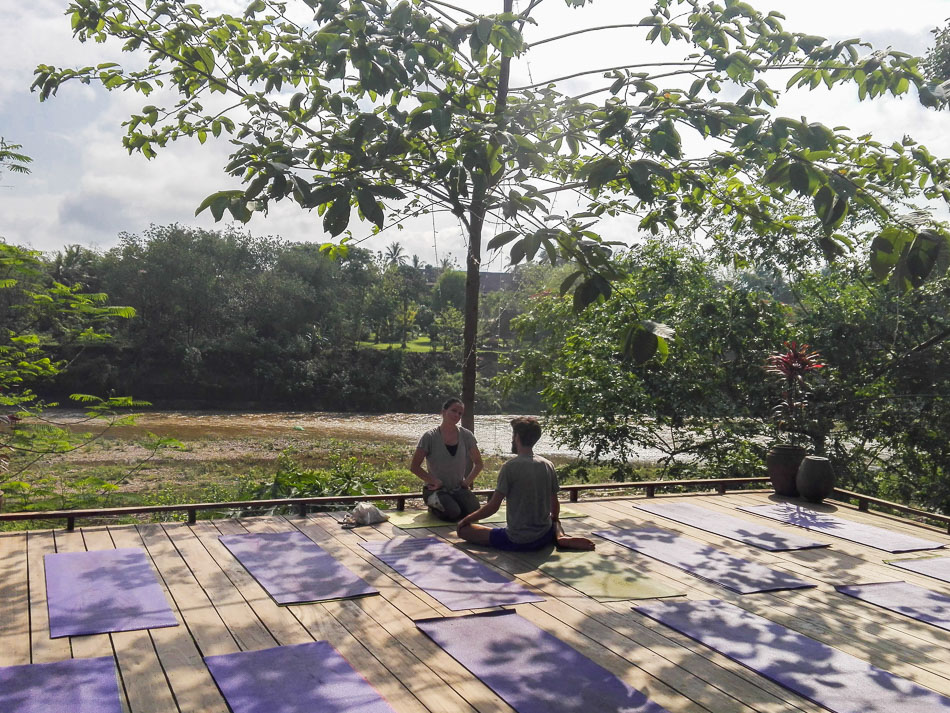
(Nuno being the teacher’s pet)
Royal Palace Museum (Haw Kham)
The 20th-century building where the royal family lived is now a national museum housing many historical items such as art, the king’s collection of cars, and offerings to the Laos monarchy.
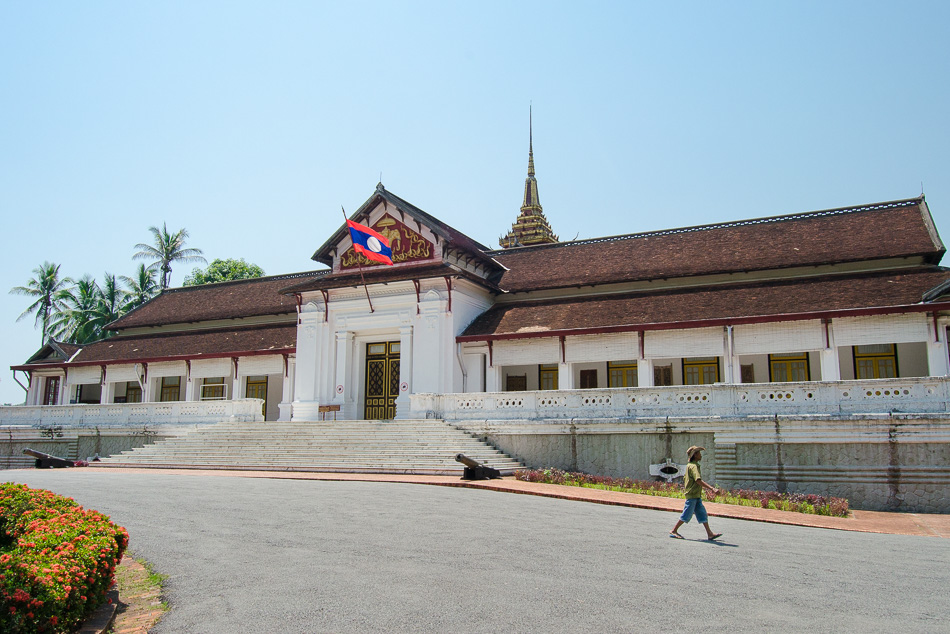
The museum opening hours are 8:00 AM to 11:30 AM and 1:30 PM to 4:00 PM.
Closed on Tuesdays.
The admission fee is €3,07
Kuang Si Falls
Getting there was an adventure on its own and we wrote an entire blog post about it: Getting to the Kuang Si Waterfalls.
Watching the sunset from Mount Phu Si
Since every sunset we’d seen in Luang Prabang was breathtaking, we were curious about why the ones from Mount Phu Si (according to the entire internet) stood out as the best. So we paid €2,13 to access the top of the hill and after 20 minutes of panting and sweating up the stairs, we met with 80 other tourists waiting for it.
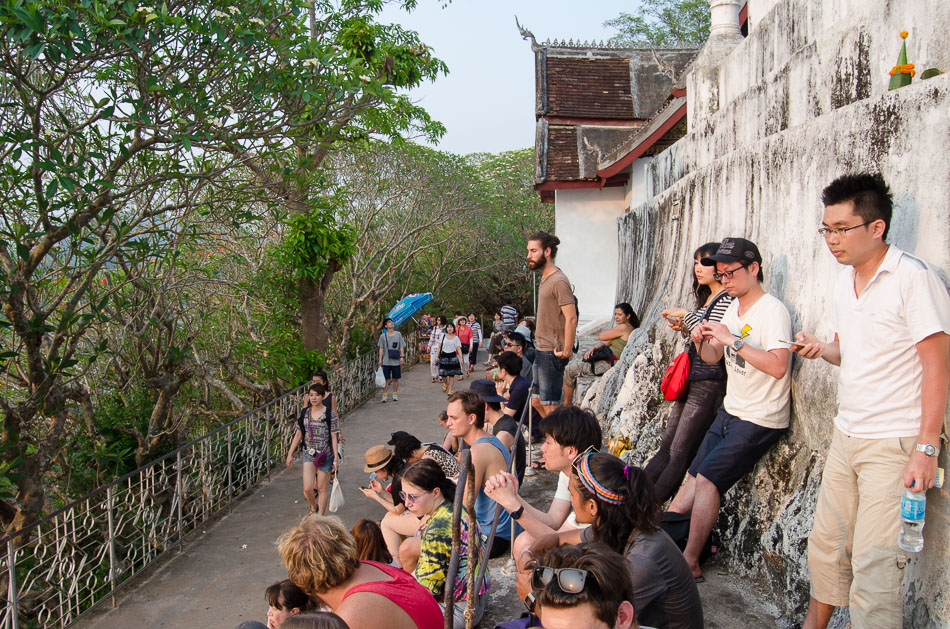
We realized that up there on the summit, is not all about the sun going down, but the privilege of enjoying a 360º view of the landscape as it happens.
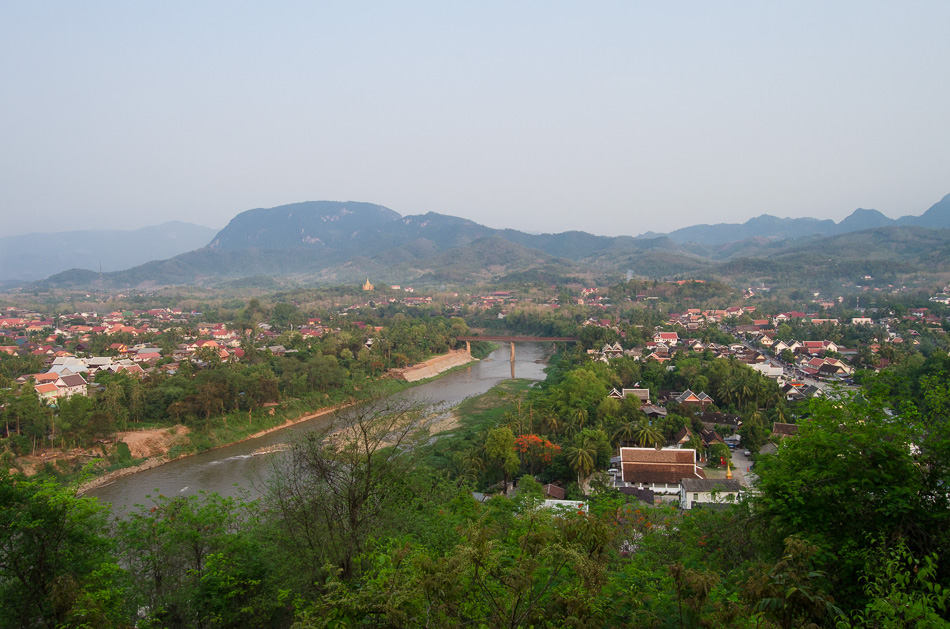
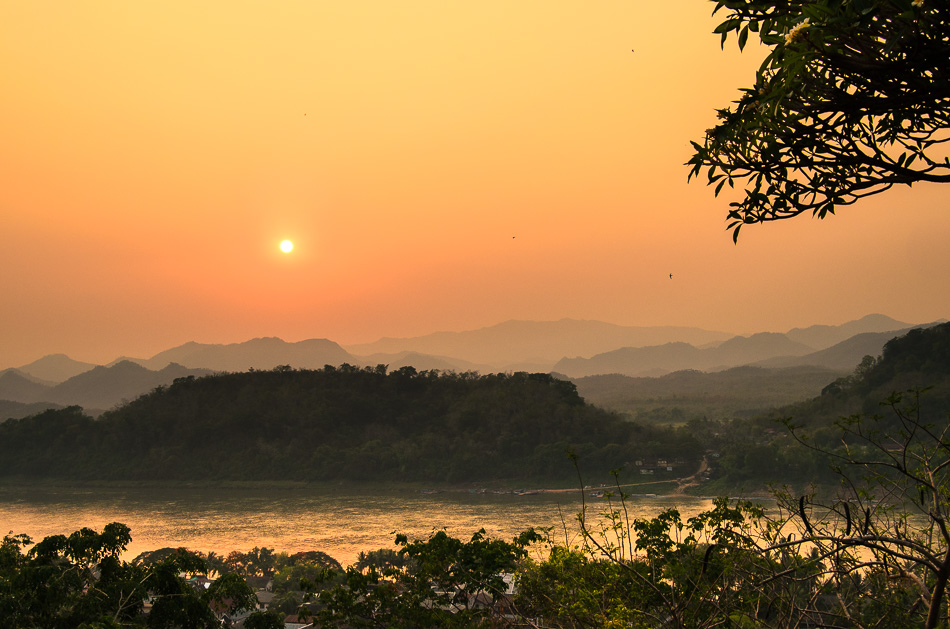
Tips: Go at least a couple of hours before the sunsets to visit the temples along the way, and reserve a nice spot at the top—it tends to get crowded up there.
If it’s a cloudy day, don’t even bother climbing those stairs.
A stroll through the Evening Market
Every evening from around 5:00 PM to 10:00 PM-ish, the entire Sisavangvong street is closed off to vehicles and occupied by vendors aiming to sell their handmade products to tourists. If you’re looking for a souvenir, you’ll find an extensive collection of handicrafts such as textiles, paintings, bags, jewelry, and paper lanterns.
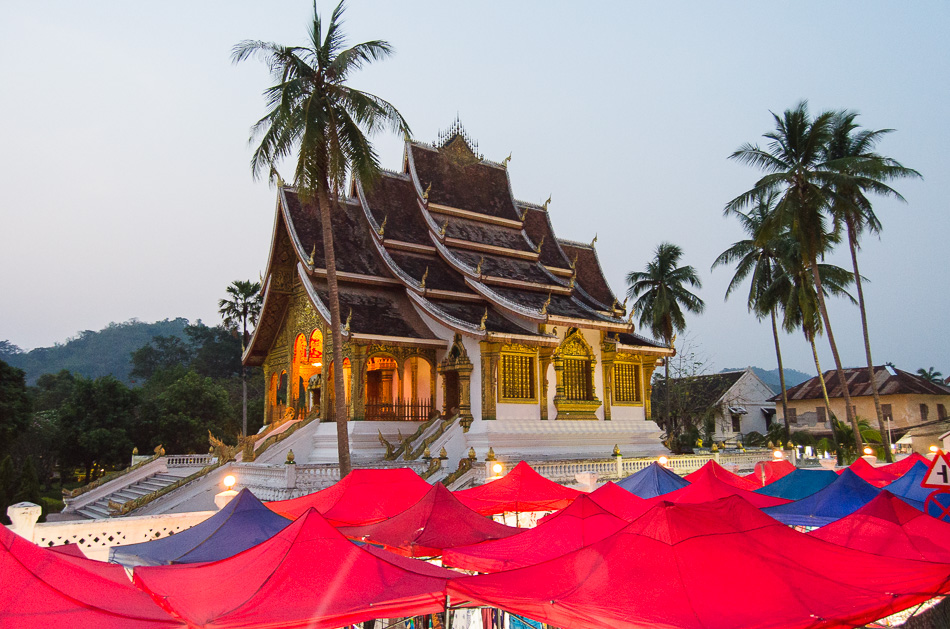
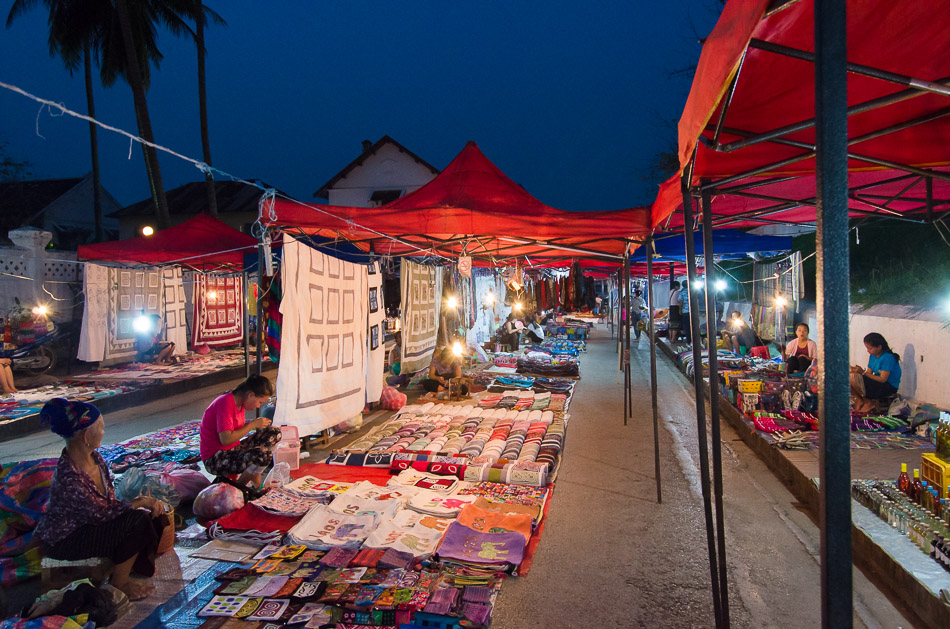
Visiting the Morning Market
For more of an authentic Laotian experience, head towards Wat Phonxay or the Royal Palace. Next to it, along a couple of side streets, will be the morning market. It’s mostly a food market where vendors set up on the ground stacks of fresh fruit, dried squid, spices, ant eggs, frog legs, and fish from the Mekong.
Tip: the earlier you go, the better.
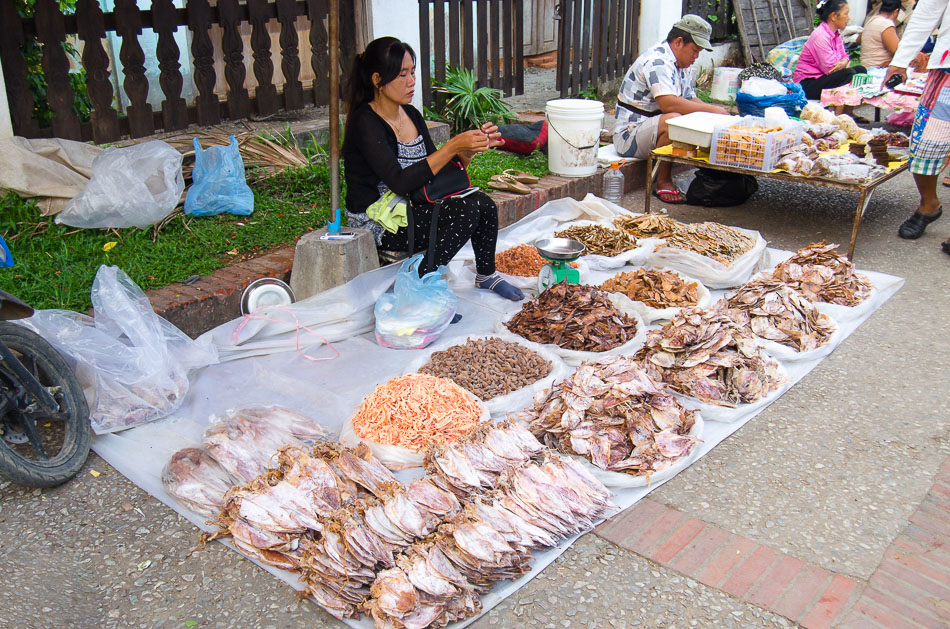
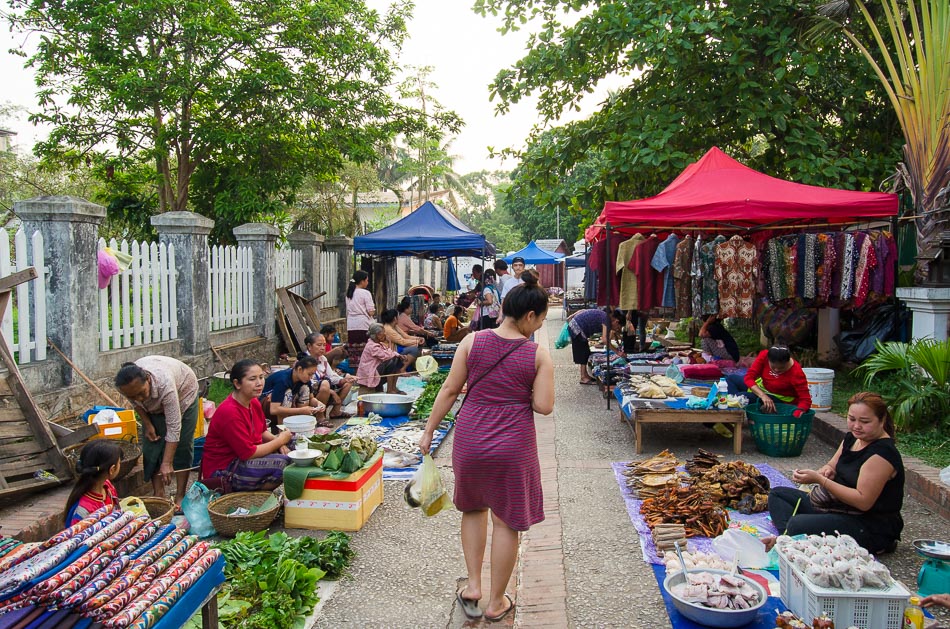
Unlike many other Asian street markets, vendors won’t call you out to buy their wares so you’re set to have a more enjoyable and less awkward experience.
Crossing the Bamboo Bridge
There are two bamboo bridges over the Nam Khan River that you can cross for €0,54. These bridges are built in 10 days every year during the dry season and torn down during the rainy season.
Explore the other side of the river and find your private spot to watch the sunset. They can be as epic as the ones from Mount Phu Si.
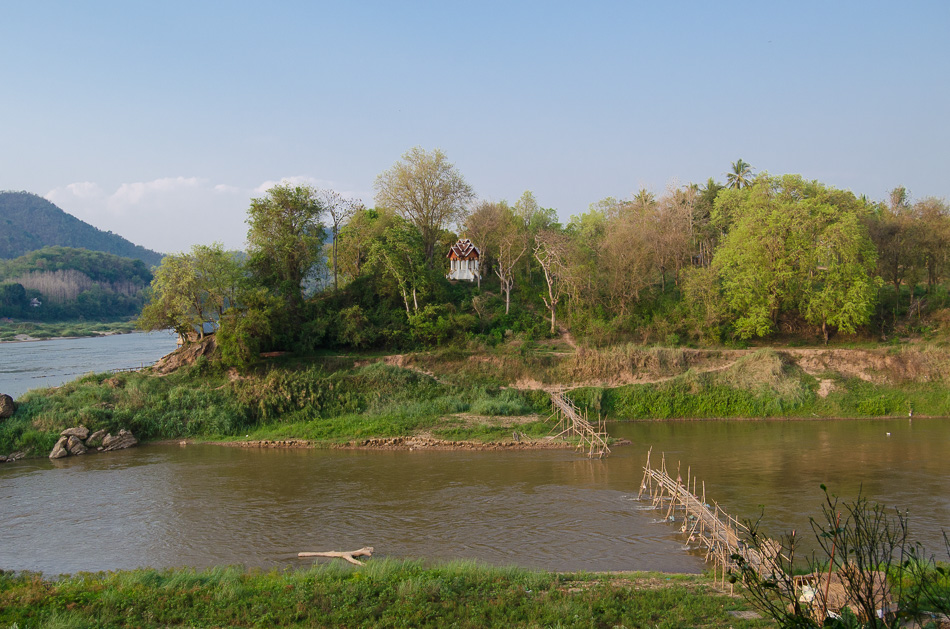
A post shared by Mario and Nuno | Travel (@helloplanetgravy) on
Temple Visit
There’s a humble and endearing quality about the temples in Luang Prabang. They’re not as grand as the ones you might see in Thailand, but they feel alive and just as special. As we mentioned before, there are 33 active temples in LP and most are free to enter. We recommend:
– That Chomsi on the top of Mount Phu Si.
– Wat Ho Pha Bang near the Royal Palace where you can see the Pha Bang sculpture that gave the town its name.
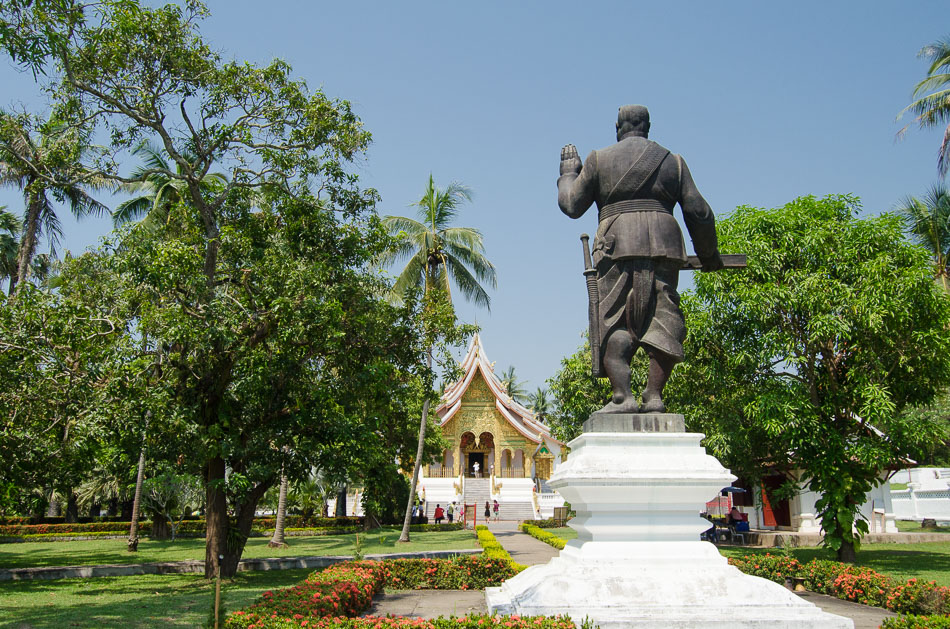
– Wat Xieng Thong, is one of the most visited temples in Luang Prabang. Entrance fee: €2,13
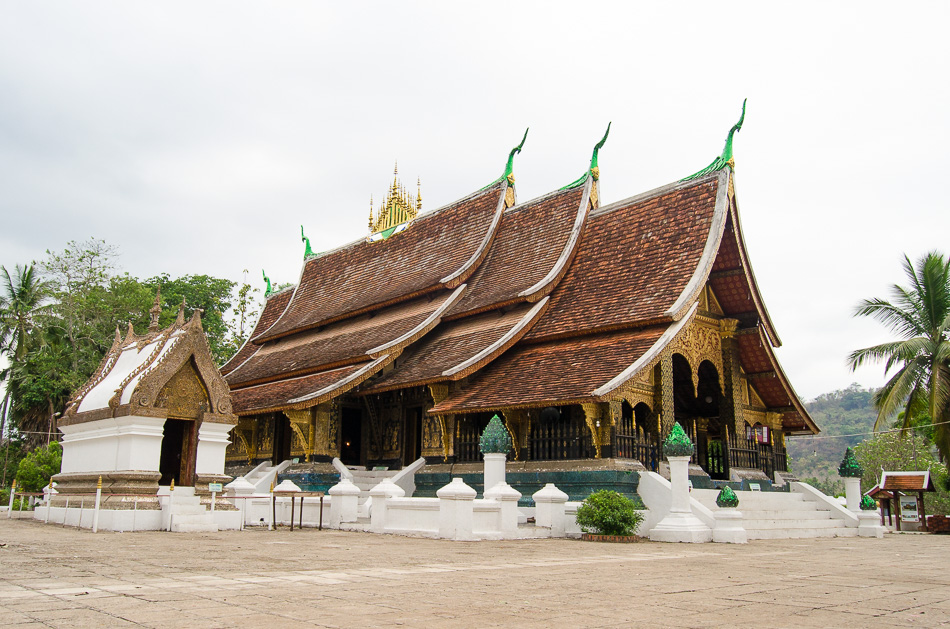
– Wat Wisunarat, one of the oldest temples around with a huge collection of Buddha images inside. Entrance fee €2,13

Tip: leave the visit for later if the temple is being used for meditation or other religious activities. Use common sense and dress appropriately for Wat visits.
Pak Ou Caves
The Pak Ou caves have been a Buddhist holy site for more than 300 years. The shrines are inside a limestone cliff, located about 25 km outside of Luang Prabang. Inside the caves are more than 4000 Buddha statues, but you’ll need a flashlight to see them all.
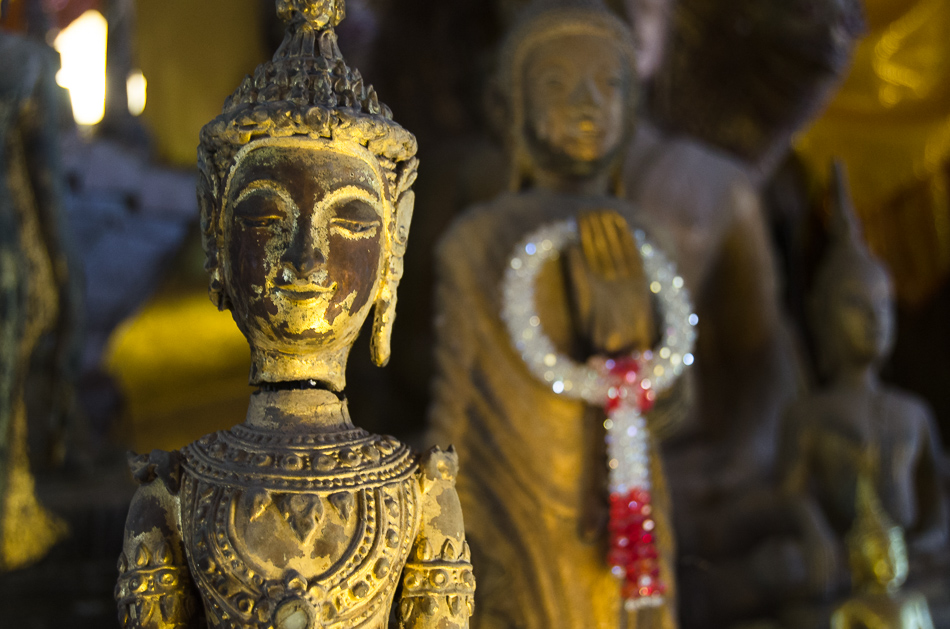
It’s only possible to reach the site by boat on a rather long ride (1h30) considering the short distance. However, the slow pace of the trip is perfect for laying back and enjoying the view.
Boat ride fee: €7
Pak Ou Caves entrance fee: €2
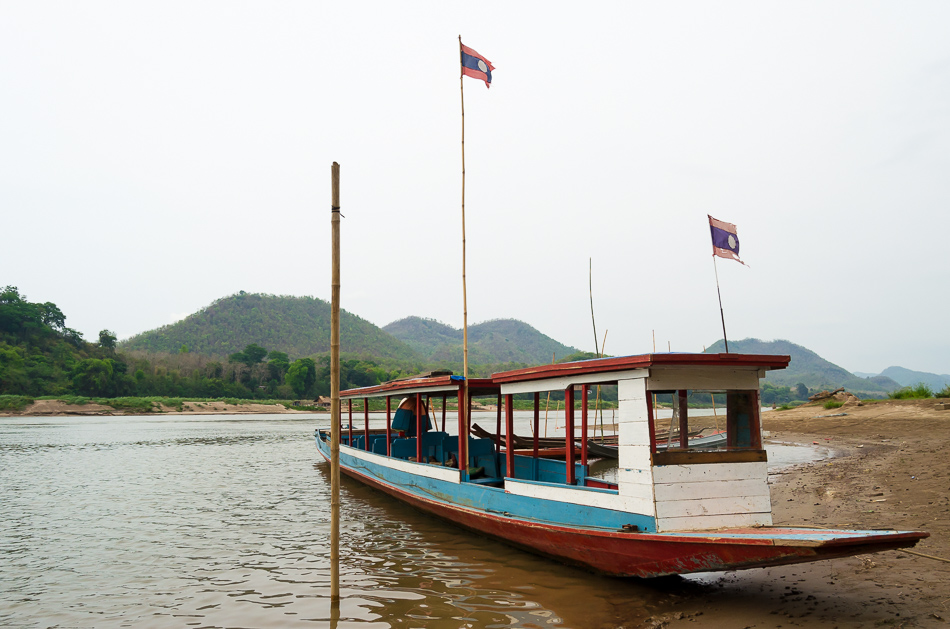
Where to eat in Luang Prabang (budget-friendly food)
Lao Sandwiches and Fruit Shakes
In the central town square are about 10 stalls selling Lao sandwiches with different filling options including vegetarian. You can’t leave Luang Prabang without eating one along with a fruit shake. We ate one a day during our 13-day stay.
Tip: as the food is not refrigerated and the average temperature is 29ºC, avoid the mayo. 😉
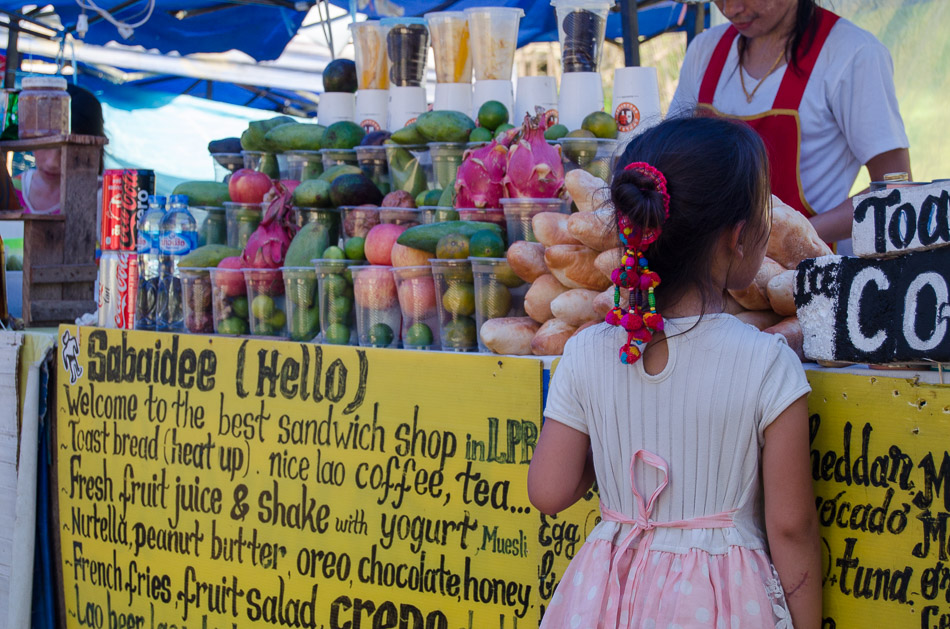
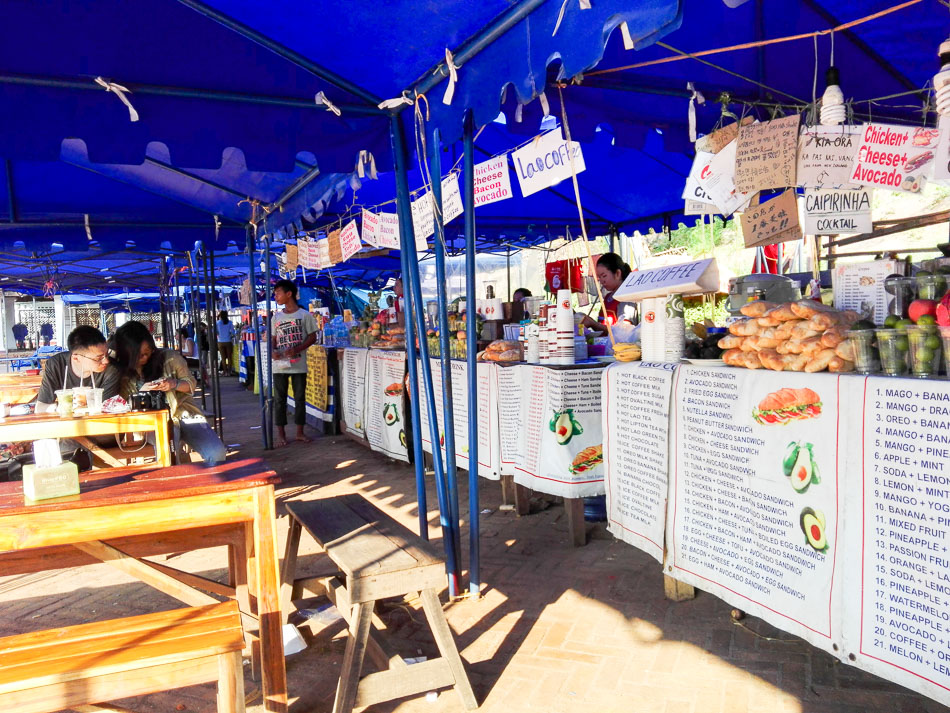
Buffet Street
If you’re into all-you-can-eat buffets, this is your street. Located between the tourist information center and Indigo House Cafe is an alley filled with food stalls and a communal-style sitting area. Fill your plate with all the food you want for €1,70 excluding meat, and enjoy! (meat is an extra €1,70)
Tip: the earlier you arrive, the more options you’ll have.
Laotian Fruit
For dessert have some tropical sliced fruit from one of the vendors at the start of the buffet street. To this day, it’s still the sweetest and juiciest fruit we’ve ever had.
Hot Pot
It’s the most fun meal to share with friends in an outdoor restaurant like BroTher House. For €2.70 a person, you’ll get sprouts, eggs, meat, tofu, noodles, mushrooms, and greens for everyone to cook in a bbq hot pot.
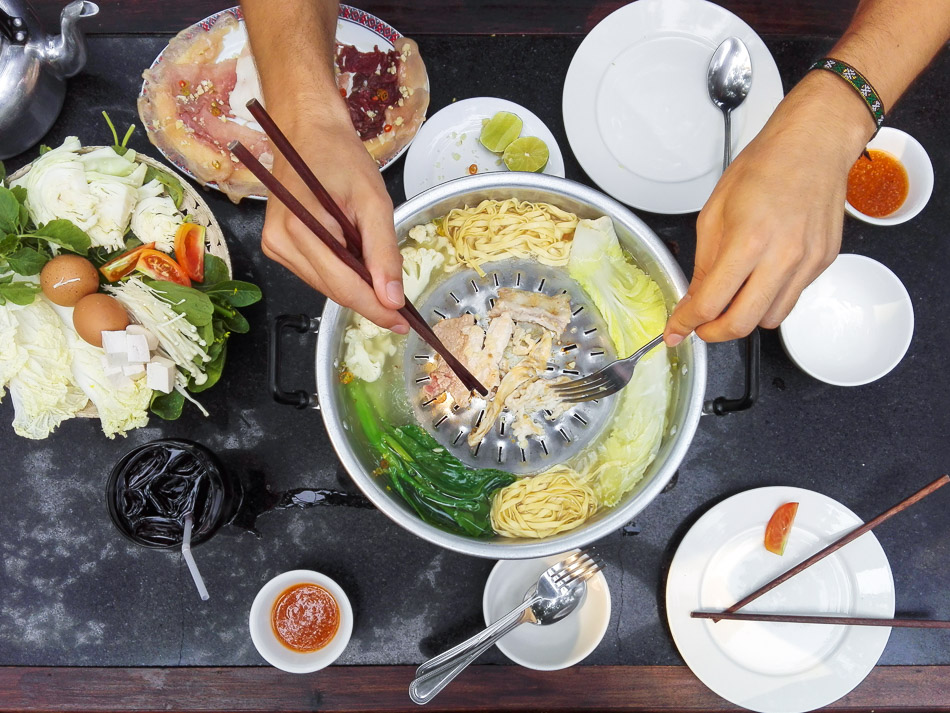
Breakfast at Joma
There are two Joma Bakeries in LP: one sucks, and the other is great.
The great one is located right by the Nham Kam River, on Kingkitsirath Road behind Wat Sene. It has comfy indoor and outdoor spaces, the staff is friendly, the coffee is excellent and the air conditioning is always blasting. The only downside is the touristy prices, but they have special deals on bread and cakes from the day before.
Oh, and it had the fastest wifi connection we managed to find in Luang Prabang!
Luang Prabang’s average daily expenses (for 1 person)
Accommodation: €4,47
Water bottle: €0,28
Breakfast: €1,5
Lunch: €1,82
Dinner: €2,62
Bicycle rental: €1
Yoga class: €4,26
Bus from Dien Bien Phu (Vietnam) to Luang Prabang: €20,15
If you have any questions or some extra info to share, please leave it in the comments below. Thanks!
(Cover image by Xiquinho Silva)
Getting to the Kuang Si waterfalls in Luang Prabang
If you look through a Laos travel guide you’ll find the Kuang Si waterfalls coming up as “the top-rated”, “must-see”, “unmissable attraction in Luang Prabang”. Also, if you browse over some reviews on TripAdvisor, not one person seems disappointed by them.
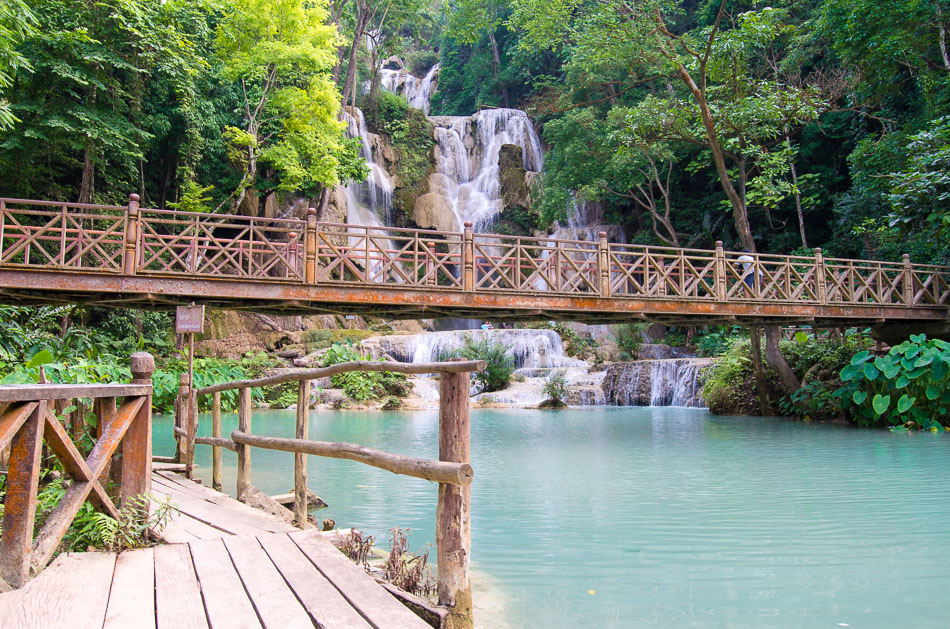

Simply put, these falls aren’t “just another waterfall”. Over the years a single large 60m cascade tumbling continuously from the jungle, carved several multi-tier pools of bright turquoise water, making the site look pretty much like the garden of Eden. The sunlight piercing through the green tropical vegetation, the wooden bridges, and even the little fishies nibbling at your feet once you get in the water feels like paradise—it’s like a Spa at the Olympus!
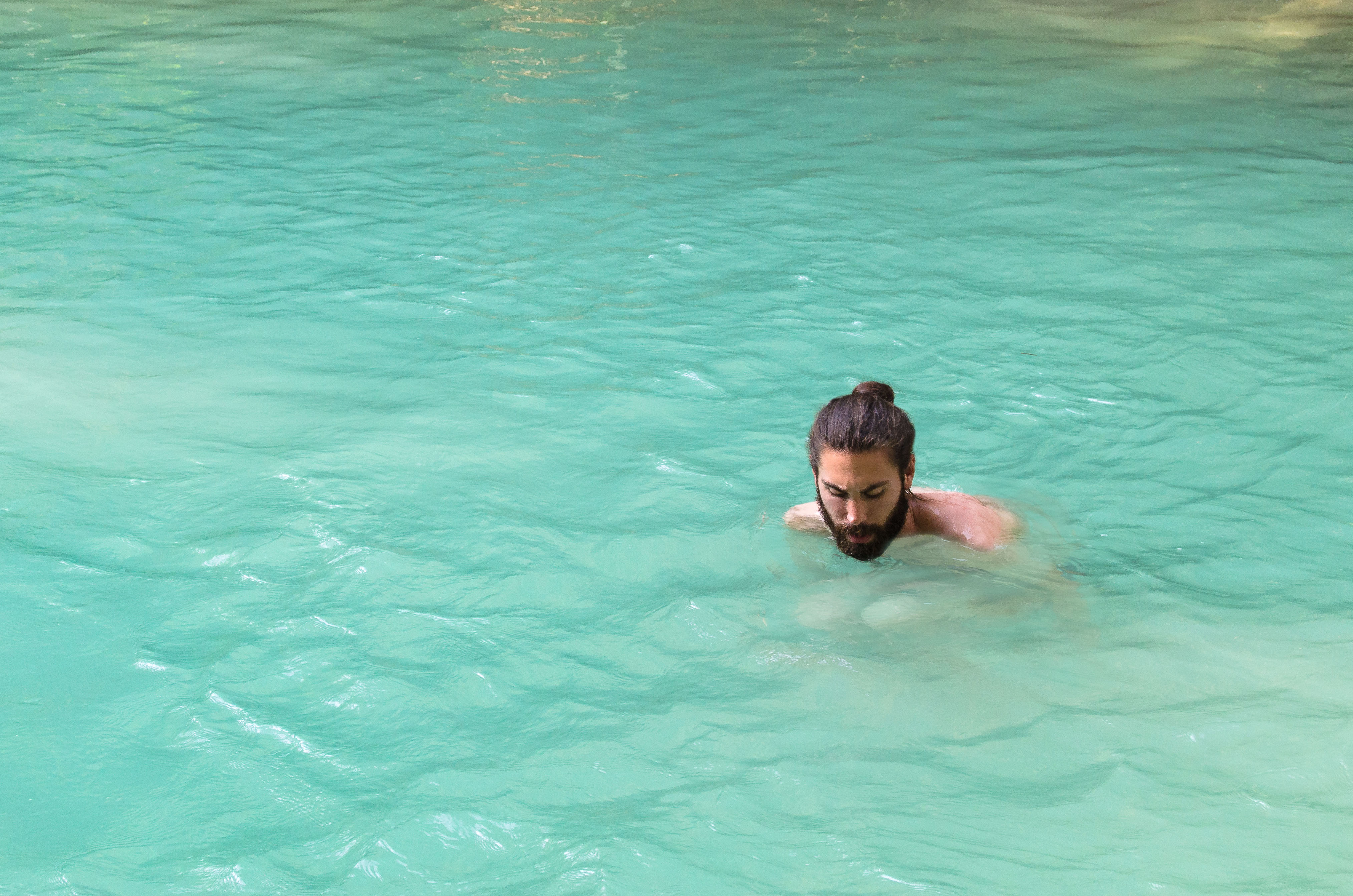
Best time to visit the waterfalls
They can be visited all year round. There’s only a downside of doing it during the rainy season: the water will be cloudy and muddy instead of blue.
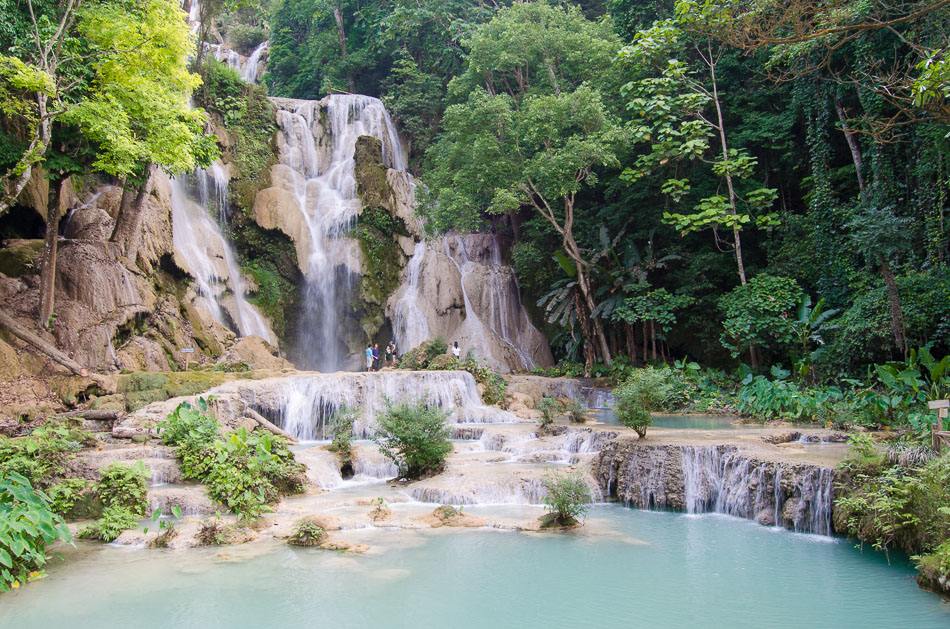

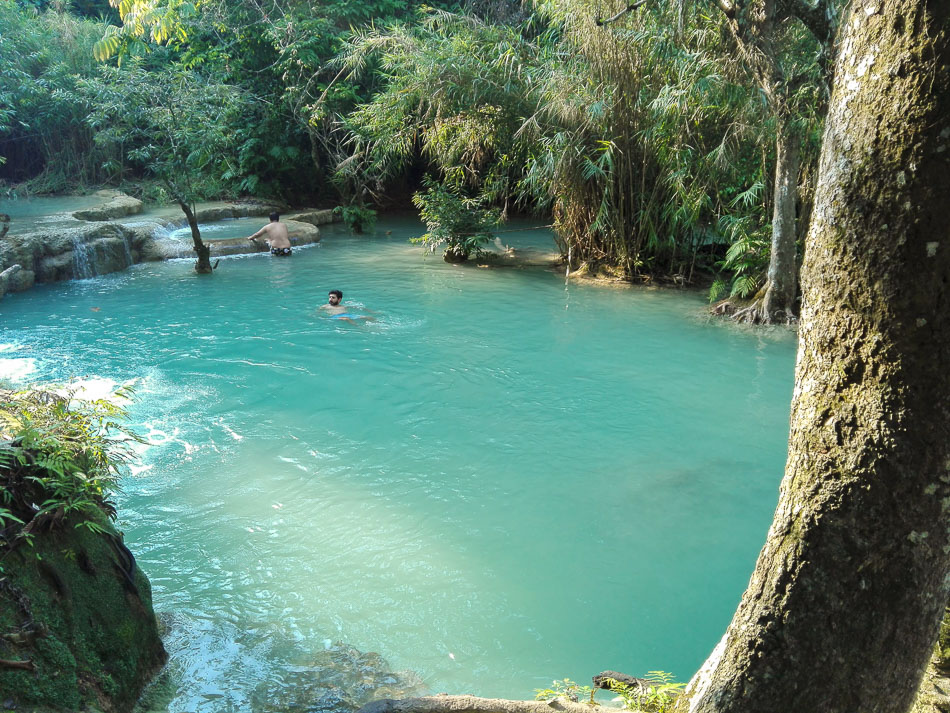
Transportation options to the Kuang Si Waterfalls
Tuk-tuk: you’ll find many tuk-tuks around town ready to get you there. By gathering a group of 3 to 4 people you can split the bill. Rides are about €22.50 for a round trip and for half a day.

Mini Bus: any travel agent on Sisavangvong Road have mini buses or minivans going to the Kuang Si Falls every day. The price are €3 per person with pick up at your hotel. Have in mind that the departure and return times are set from 11:30 AM to 2:30 PM (which is a big downside).
Motorbike: can be rented for €11, use maps.me for guidance (Google Maps doesn’t work that well in Luang Prabang).
Bicycle: rentals start at €1 a day and most hotels in Luang Prabang provide this service.
You get what you pay for
As backpackers, our mind is always set to save as much money as we can, so we chose the bicycle—it’s only 30 km anyways, it’ll be fun, we thought. We can make a cycling excursion out of it!
So there we went: two tall guys pedaling on bikes not made for adult men and with no gears (but were the only ones available in our hotel that day).
On motorized vehicles, rides take 45 minutes.
We took 4 hours.
Kuang Si Park
Entrance fee: €2.13 (20000 kips)
Opening hours: every day from 8:00 AM to 17:30 PM.
Next to the main entrance are restaurants, fruit stalls, bathrooms and small wooden huts to change clothes. As you might expect, the park is very popular among locals and tourists.
The Bear Sanctuary
At the beginning of the park is an animal sanctuary housing 25 Asiatic Black Bears rescued from the hands of poachers and traffickers. Lamentably to this day, bears keep being illegally sold to Vietnam and China for their bile—a valuable component in traditional medicine.
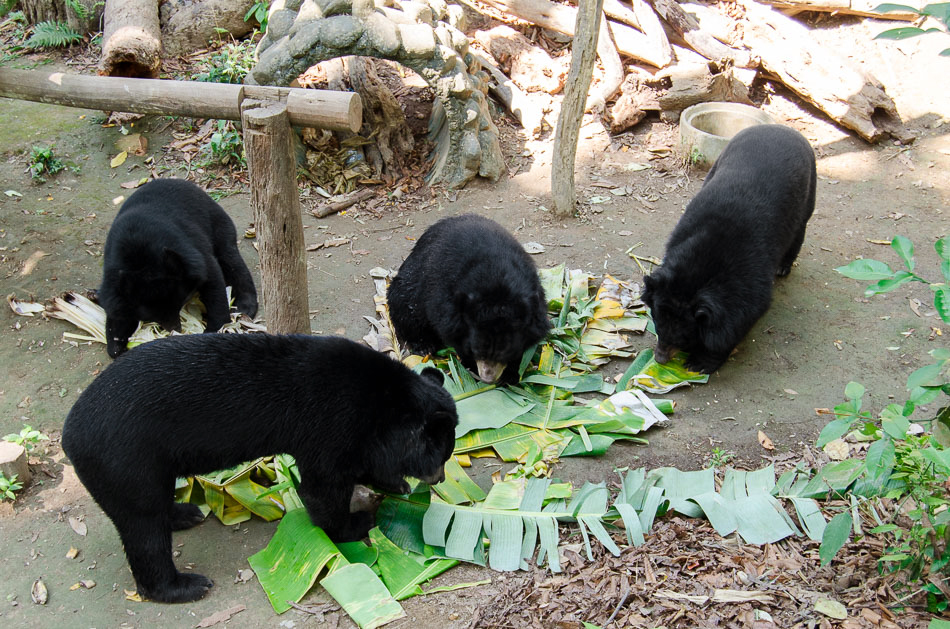
The sanctuary is run by an Australian non-profit in collaboration with the Lao authorities. Find out more about Free the Bears Fund here: www.facebook.com/freethebearsfund
The bears are adorable.
Climbing to the top of the fall
On the right side of the larger waterfall is a muddy and unkempt trail running through the middle of the forest all the way to the top of the fall. Up there everything is quieter and the dense vegetation covers the light, but the view is spectacular!


Kuang Si secret pool
Somewhere in the middle of the climb is a path to a secluded natural pool. To learn how to reach it, you can watch this video on Youtube: www.youtube.com/secret-pools-kuang-si-waterfalls
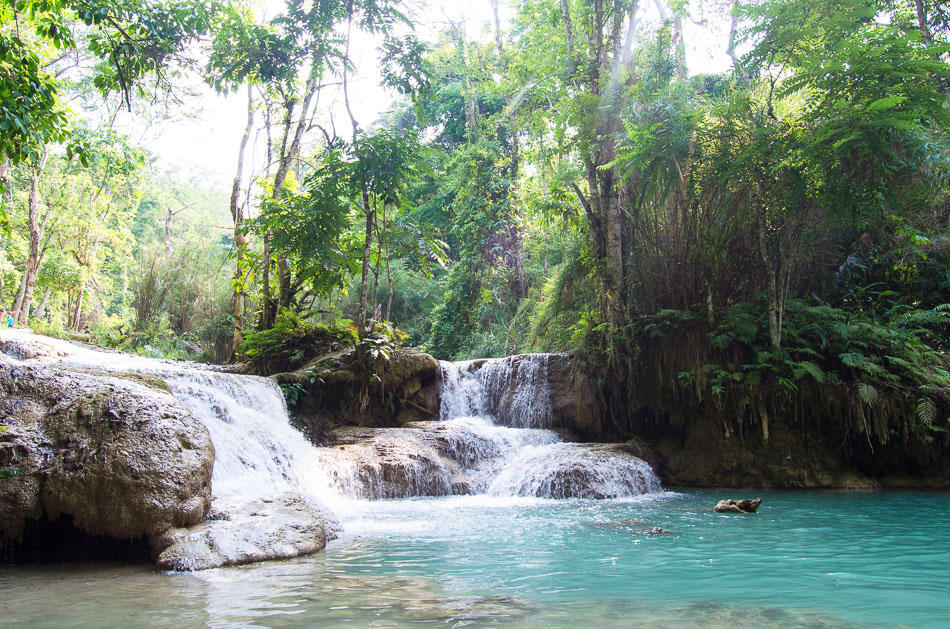
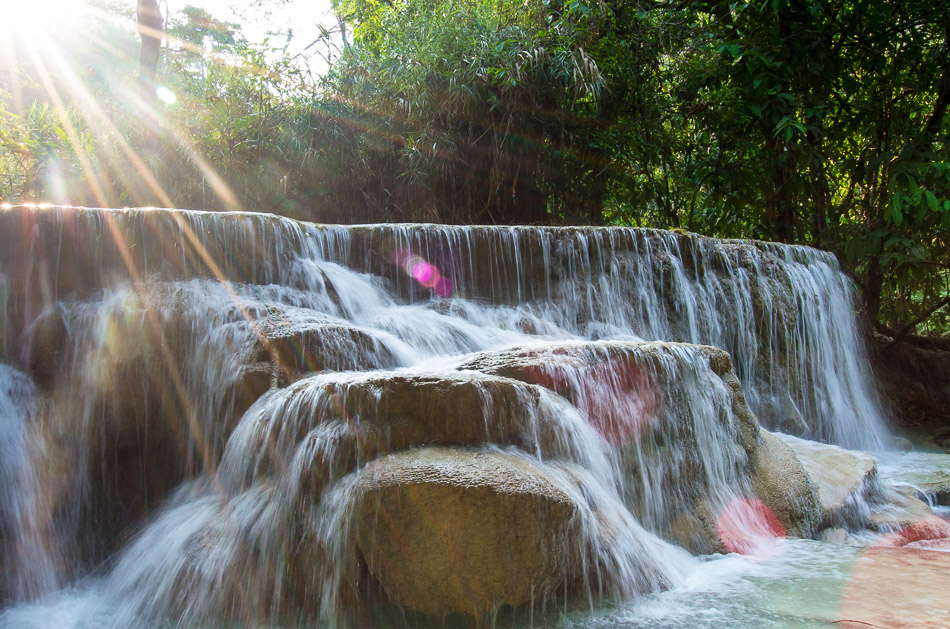
Returning to Luang Prabang
The end of the day came without us noticing. When we got on the bicycles and saw that the sun was almost gone, it hit us: HOLY. F*CK. We still have a 4-hour bike ride to Luang Prabang!
In less than an hour we were pedaling on pitch black—no streetlights whatsoever and completely alone. At one point to actually see the road, we turned the phone’s flashlights on, but the light attracted an assortment of flying bugs (beetles, grasshoppers, moths, and mosquitoes) that kept flying into our face, eyes, and mouth.
Nuno’s bike chain kept coming off forcing us to stop every 10 minutes to fix it, and every time we stopped we heard rustling coming from the bushes at the side of the road. As far as I’m concerned it could be a rat, but it could also be a fled bear from the park or a chupacabra thirsty for blood, and we were freaking out!
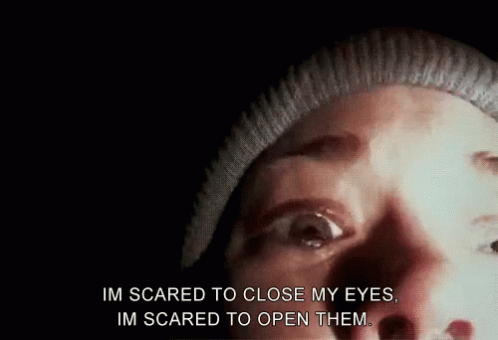
After god knows how many hours we arrived in Luang Prabang starving, exhausted and with a newfound love for tuk-tuks.
Are you planning on visiting the Kuang Si Falls? Will you do it by bicycle?
Have you been there already? Let us know in the comments below.
Cover photo by Shankar S.
